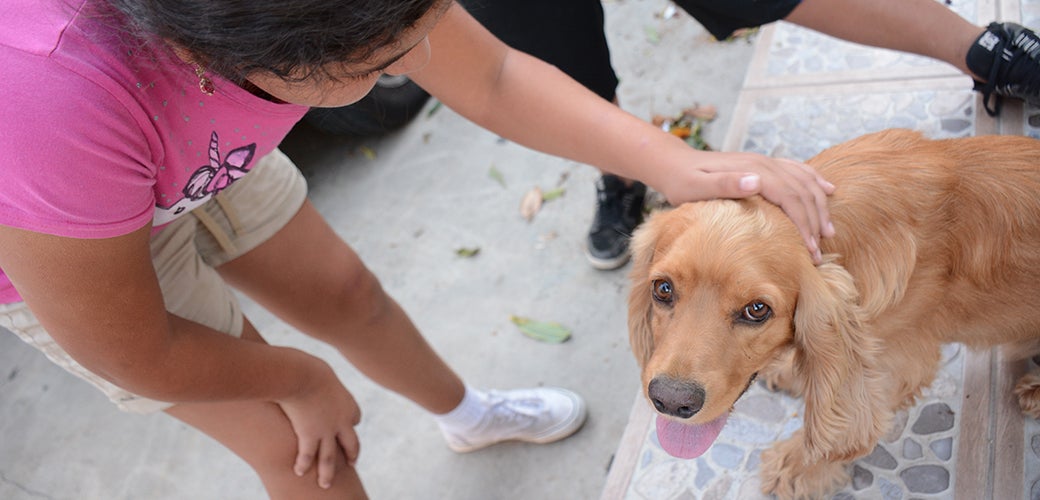

Did you know that although dogs are humankind’s best friends, more than 4.5 million people are bitten by canines in the United States every year according to the American Veterinary Medical Association? Children are the most common victims of dog bites, and at least half of those who receive medical care for dog bites each year are children. April 11-17, is Dog Bite Prevention week, and we would like to take this opportunity to share a few tips about bite prevention and how you can help spread awareness to help reduce the number of dog bites we see each year.
- Ask first before petting a dog. When meeting an unfamiliar dog, don’t reach out to pet them. First, ask their pet parent if it’s okay. A strange hand in a dog’s face may scare them, leading to a bite.
- If you receive permission to pet a dog, let them sniff your closed hand first. Then, you may proceed to pet their shoulders or chest. Avoid petting the top of a dog’s head. If the dog looks uncomfortable, speak happily to the dog and casually remove your hand. Resist moving abruptly or jerkily.
- Do not touch a dog who is sleeping, eating or chewing a toy or bone. Respect their space, as startled dogs are more likely to bite.
- Know the signs that dogs give through their body language to indicate that they’re feeling anxious, afraid, threatened or aggressive, and be sure to respect the dog’s feelings about interacting with or being touched by strangers:
- An aggressive dog may try to make themselves look bigger. Their ears may be up and forward, the fur on their back and tail may stand on end or puff out, and their tail may be straight up—it may even wag. They may have a stiff, straight-legged stance and be moving toward or staring directly at what they think is an approaching threat. They may also bare their teeth, growl, lunge or bark.
- An anxious or scared dog may try to make themselves look smaller. They may shrink to the ground in a crouch, lower their head, repeatedly lick their lips, put their tail between their legs, flatten their ears back and yawn. They may look away to avoid direct eye contact. The dog may stay very still or roll on their back and expose their stomach. Alternatively, they may try to turn away or slowly move away from what they think is an approaching threat.
- Many dogs can show a mixture of these body postures, indicating that they feel conflicted. Remember to avoid any dog showing any of signs of fear, aggression or anxiety—no matter what else the dog is doing. It’s important to realize that a wagging tail or a crouching body doesn’t always mean friendliness.
Source: Read Full Article